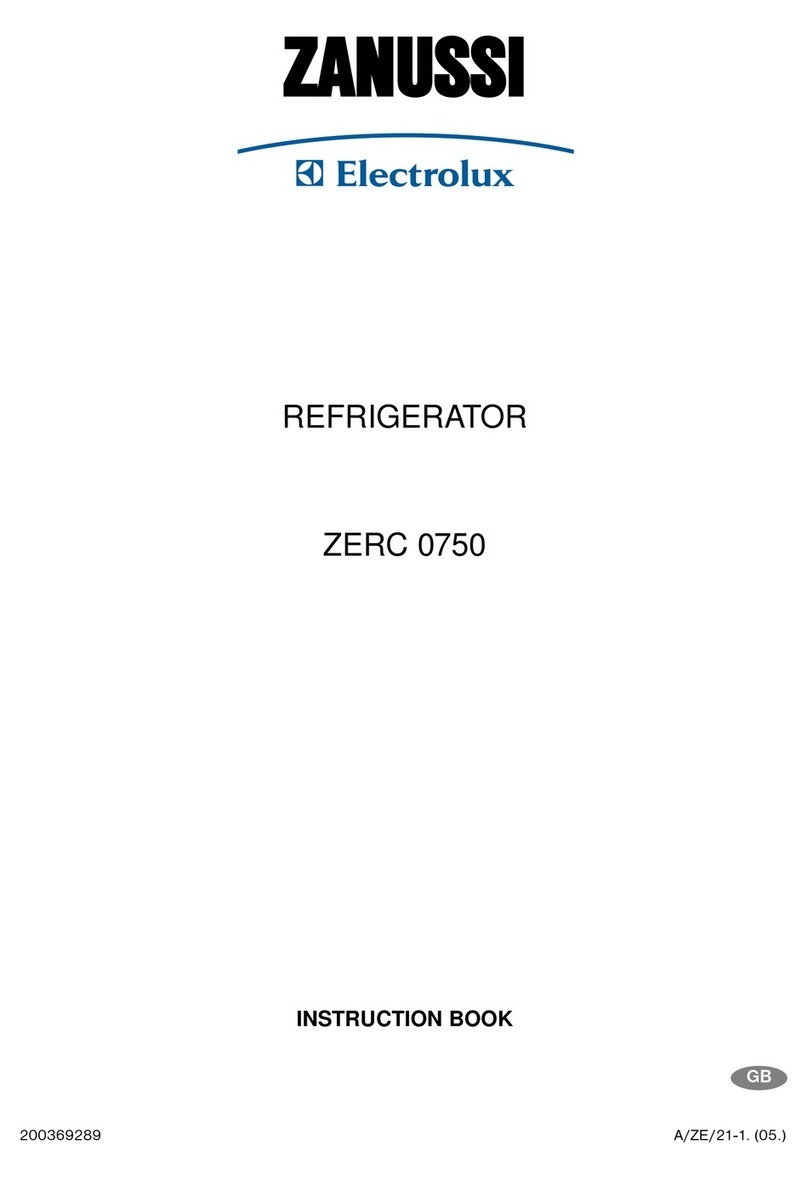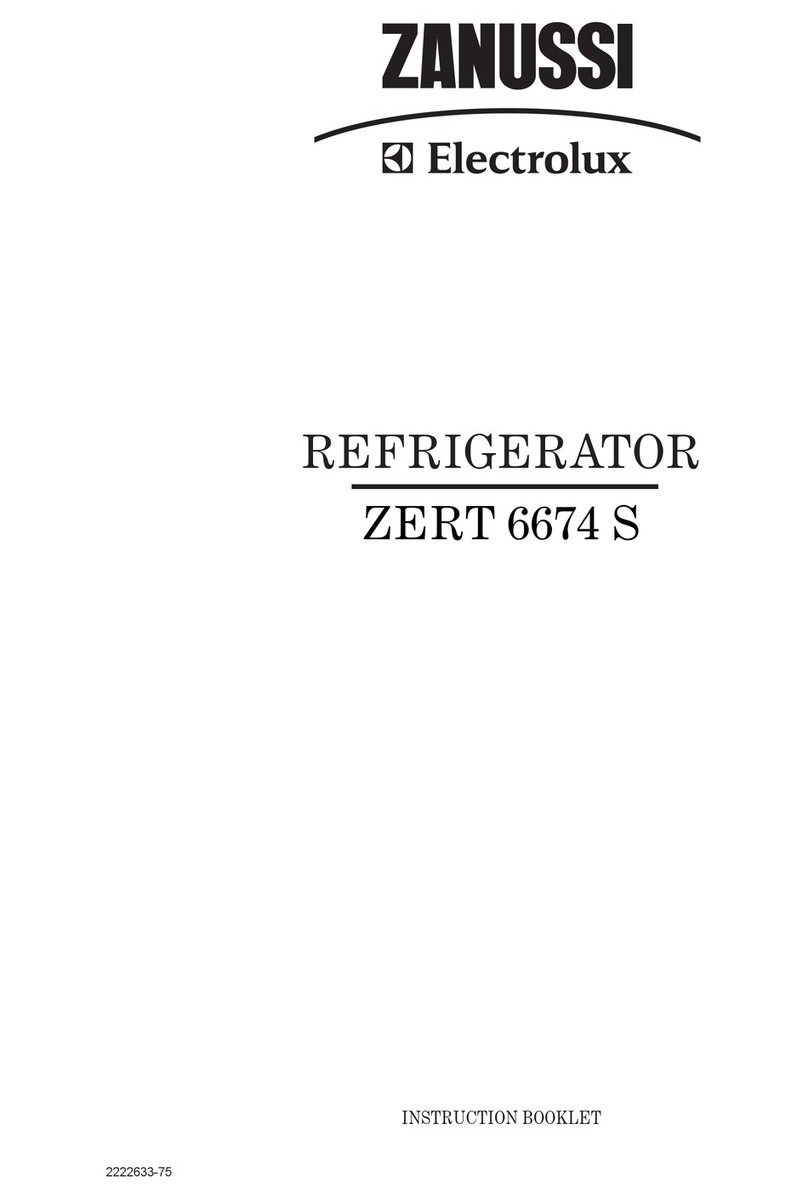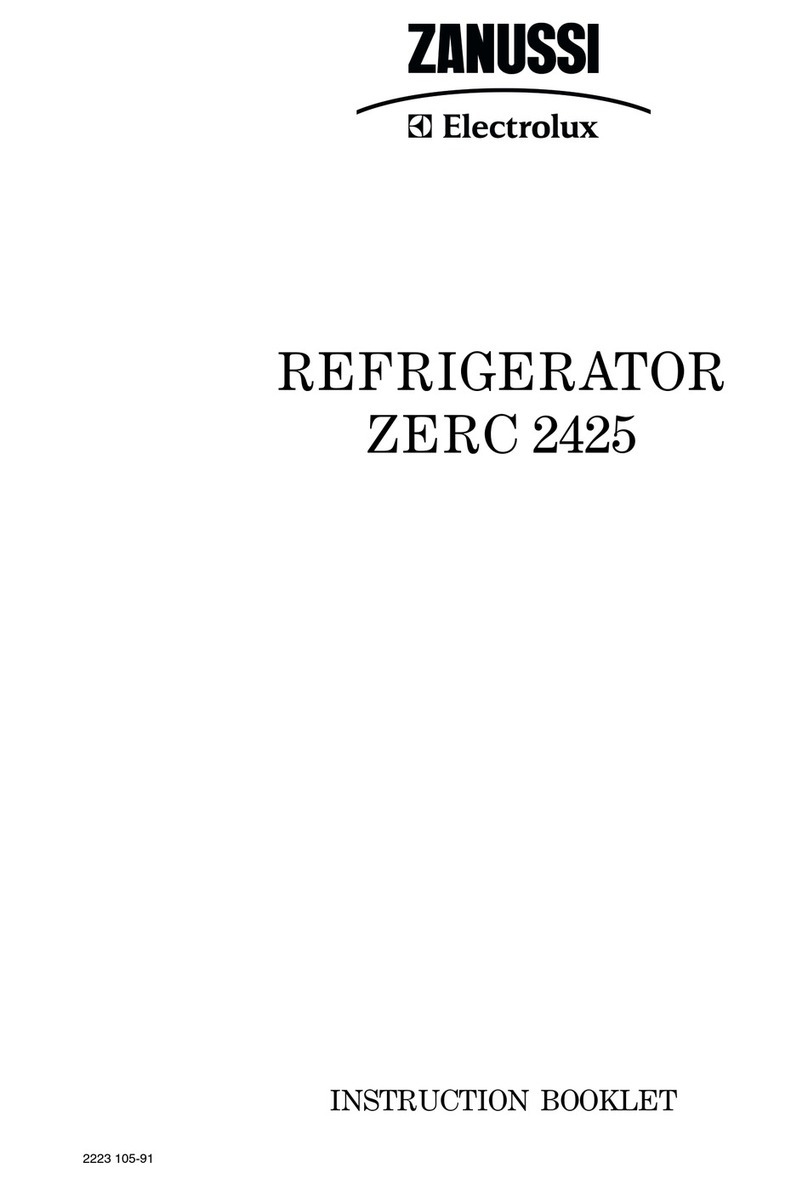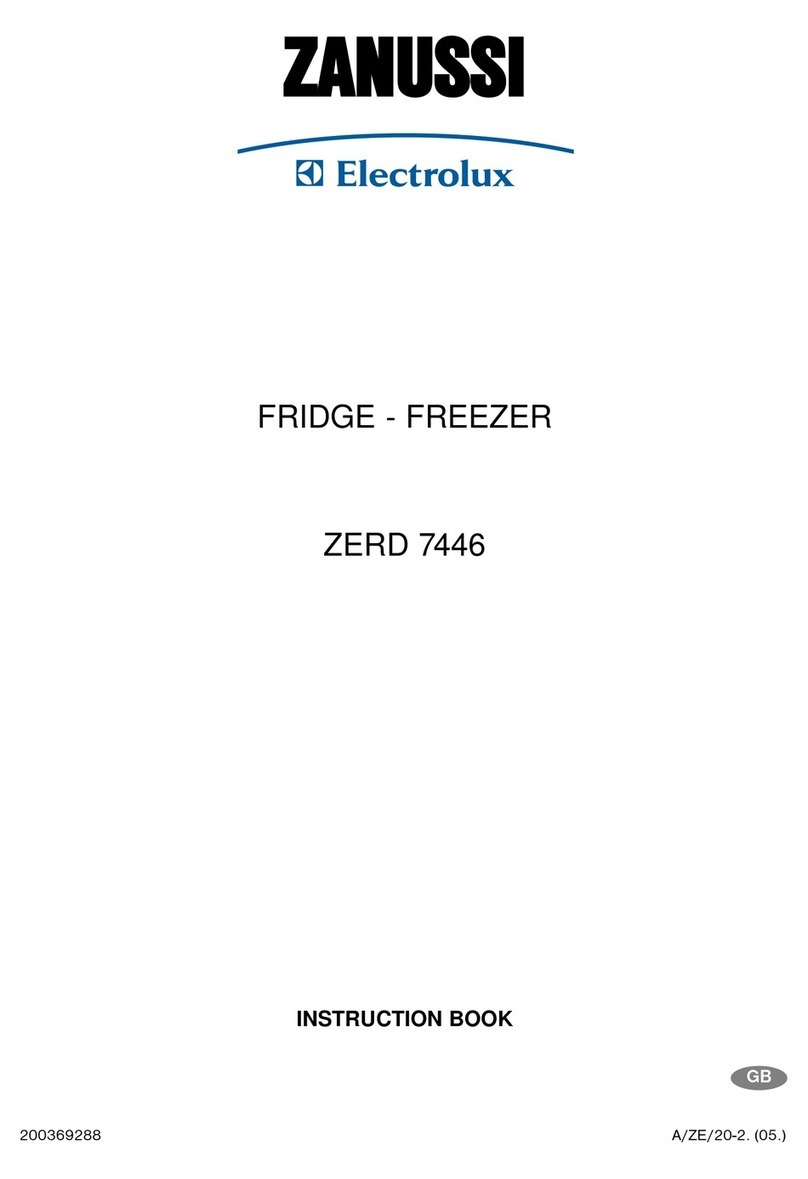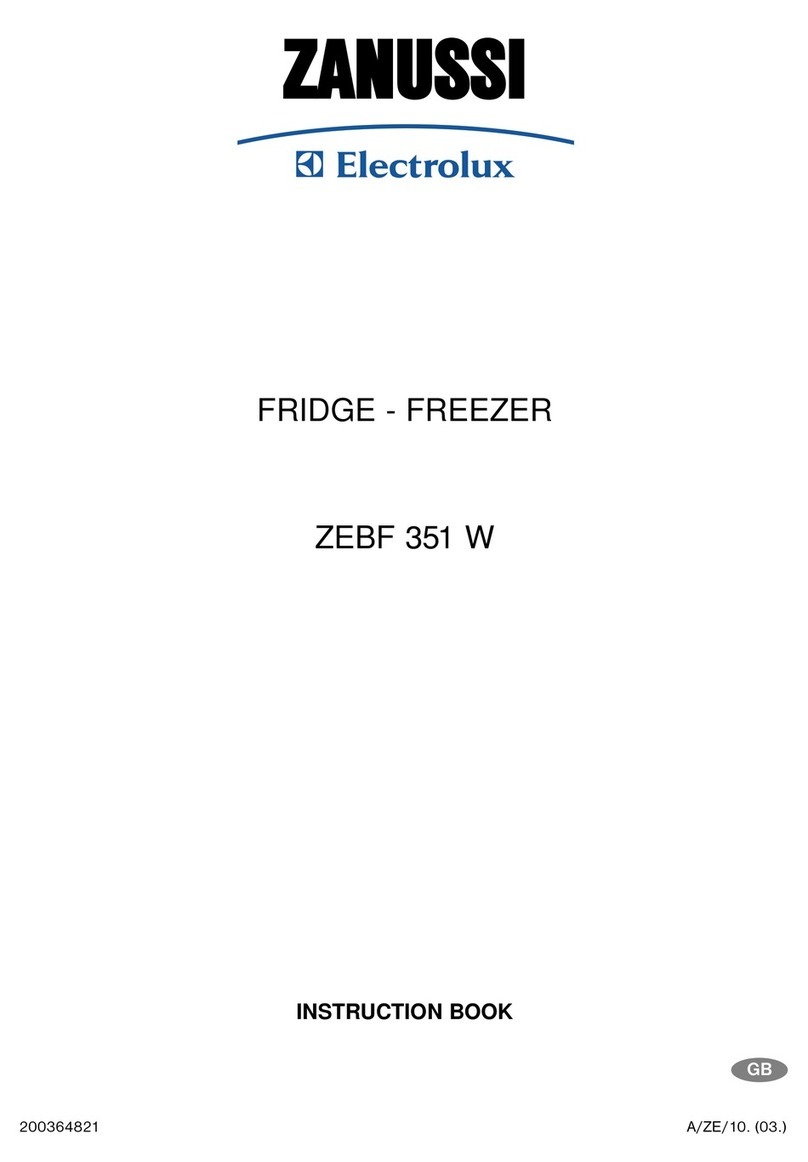7
HINTS AND TIPS
Normal Operating Sounds
• You may hear faint gurgling or bubbling soun s
when the refrigerant is pumpe through the coils
or tubing at the rear, to the cooling
plate/evaporator.
• When the compressor is on, the refrigerant is
being pumpe roun , an you will hear a whirring
soun or pulsating noise from the compressor.
• A thermostat controls the compressor, an you
will hear a faint ’click’ when the thermostat cuts in
an out.
Food Storage
To obtain the best performance from your fri ge-
freezer
• Do not store warm foo or evaporating liqui s.
• Avoi buying frozen foo if you cannot store it
straight away. The use of an insulate container is
a visable. When you arrive home place the frozen
foo in the freezer imme iately.
• Keep the time between buying chille foo an
placing it in your refrigerator as short as possible.
• Do not push foo together too much, try to allow
air to circulate aroun each item.
• Do not store foo uncovere .
• Ensure that foo place in the freezer is ate
an labelle an use in ate or er to ensure
that foo is consume at its best.
• Remove suspect foo from your refrigerator an
clean, refer to Maintenance an Cleaning.
• Lean foo keeps better an longer than fatty foo ,
salt re uces the storage time.
• Wrap the foo in polythene or aluminium freezing
bags or foil so that they a here to the foo an
provi e an airtight seal .
• Packaging which is swollen or has traces of
refrozen water roplets on the pack coul in icate
that the pro uct has not been kept at a suitable
temperature an that it may have lost its original
quality. Partially thawe foo must not be
refrozen, it must be consume within 24 hours.
Never excee the storage times in icate by the
manufacturer.
• The symbols on the rawers show ifferent types
of frozen goo s.
The numbers in icate storage times in months for
the appropriate types of frozen goo s. Whether
the upper or lower value of the in icate storage
time is vali epen s on the quality of the foo s
an pre-treating before freezing.
Energy Saving Advice
• Do not install the appliance close to sources of
heat, such as a boiler or ra iator.
• Locate the appliance in a cool well ventilate
room an make sure that the air openings of the
appliance are not obstructe .
• Avoi unnecessary frosting in the cabinet by
packing all foo stuffs into airtight packages
before placing them in the freezer.
• Always leave warm foo to cool own to room
temperature before placing in the fri ge.
• Foo which is to be frozen (when cool) shoul be
place in the fri ge before being transferre to
the freezer.
• Thaw frozen foo in the fri ge. This will ensure
safer efrosting of foo s an re uce the work of
the refrigeration unit.
• Try to avoi keeping the oor open for long
perio s or opening the oor too frequently as
warm air will enter the cabinet an cause the
compressor to switch on unnecessarily often.
• Ensure there are no obstructions preventing the
oor from closing properly.
In the Event o a Power Failure
If there is a power failure uring the storage of frozen
foo s, keep the oor close . If the temperature within
your freezer shoul rise, o not refreeze the foo
without checking its con ition. The following
gui elines shoul assist you:
Ice-cream: Once thawe shoul be iscar e .
Fruits & Vegetables: If soft shoul be cooke an
use up.
Breads & Cakes: Can be refrozen without anger.
Shell ish: Shoul be refrigerate an use up
quickly.
Cooked Dishes: i. e. casseroles shoul be
refrigerate an use up.
Large Pieces o Meat: Can be refrozen provi ing
there are still ice crystals remaining within them.
Small Joints: Shoul be cooke an can then be
refrozen as cooke ishes.
Chicken: Shoul also be cooke an refrozen as a
fresh ish.
14
INSTALLATION
Positioning
This appliance shoul only be installe at a location
where the ambient temperature correspon s to the
climate classification in icate on the rating plate,
which is locate at the left on the insi e of the
appliance.
The following table shows which ambient temperature
is correct for each climate classification:
SN +10°C to + 32°C
N +16°C to + 32°C
ST +18°C to + 38°C
T +18°C to + 43°C
It shoul be locate in a ry atmosphere, out of irect
sunlight an away from extreme temperature e.g. not
next to a boiler or ra iator, or in a very col room e.g.
an outhouse, where the temperatures may fall below
10°C (50°F). If these temperatures are excee e i.e.
col er or warmer, then the appliance may not operate
correctly.
You shoul also ensure that air can circulate freely
aroun the back an the top of the cabinet. There must
also be at least 100 mm (4”) istance between the top
of the cabinet an any overhanging kitchen furniture
(A). I eally, the appliance shoul not be positione
beneath overhanging furniture (B).
There shoul also be a gap of 25 mm either si e of the
appliance. Do not obstruct the space un erneath. The
back of the cabinet may be place close to the wall but
must not touch it. DO NOT install in places with
restricte ventilation.
A just the level of the appliance by screwing out the
a justable foot, or feet, at the bottom of the cabinet
using your fingers or a tool (see figure).




